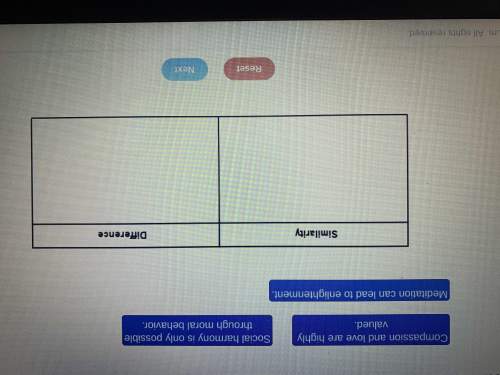
Question 11(Multiple Choice Worth 4 points) (04.03 HC)How were slaves in Sparta different from slaves in Athens? Slaves in Sparta were owned by private citizens, whereas in Athens they were owned by the state. Slaves in Sparta were owned by the state, whereas in Athens they were owned by private citizens. Slaves in Sparta were of a higher social class than slaves in Athens were. Slaves in Sparta were allowed to own property, while slaves in Athens were not. Question 12(Multiple Choice Worth 4 points) (01.02 MC)A historian wonders why an ancient civilization disappeared. He suggests that a natural disaster might have destroyed it thousands of years ago. What step should the historian take next? Ask a question Test the hypothesis Draw a conclusion Make an educated guess about what happened Question 13(Multiple Choice Worth 4 points) (01.01 LC)Use the timeline to answer the question: Image of a timeline with three dates marked 3000 BCE, 0, and 2000 CE. There are lines above 3000 BCE, 0, and 2000 CE. There is also a line marked A, which is to the right of 3000 BCE. The distance between 3000 BCE and 0 is proportionately less than the distance between 0 and 2000 CE. © 2012 FLVS Which date corresponds to letter A on the timeline? 1500 CE 1400 BCE 3200 BCE 1900 CE Question 14(Multiple Choice Worth 4 points) (01.05 LC)Social classes is a characteristic of civilization that refers to groups of people ranked by their place in society people who come together to learn a trade men and women who enjoy spending time together citizens who vote in a similar way Question 15(Multiple Choice Worth 4 points) (01.02 MC)Use the map to answer the following question: A map of early human migration is shown. A flattened globe shows six continents: North America, South America, Europe, Africa, Asia, and Australia. Purple lines and arrows show from where people originated and in which directions they migrated, starting in 18,000 BCE. The lines start in central Africa and from there, arrows point west toward northwestern Africa, and east toward the Middle East and Asia. In the Middle East, the line branches west into western Europe and northeast into Russia. The arrows also continue east into and throughout Asia, including south into the southeast Asian islands and Australia. From north Siberia, an arrow crosses into North America via the Bering Land Bridge. From North America, the arrows move south into Central and South America. © 2012 The Exploration Company Based on this map, where are the oldest human civilizations? Australia and Africa Africa and Europe Australia and Asia Asia and North America Question 16(Multiple Choice Worth 4 points) (01.02 MC)Which of these represents bias in historical materials? Leaving out the viewpoint of an enemy of war Presenting ideas of both men and women Reporting on discrimination against a particular race Considering all cultures to be equal Question 17(Multiple Choice Worth 4 points) (01.02 HC)Use the image to answer the following question: Sketch of ivory fossil Public Domain This is a sketch of an ivory artifact. Why would it be considered a secondary source? It is drawn to scale, and the patterning is accurate. It appears in the diary of a scientist who observed its discovery. It was sketched at the site on which it was found. It is a drawing of a primary source. Question 18(Multiple Choice Worth 4 points) (01.01 LC)Which of these refers to a period of 100 years? Century Decade Millennium Era Question 19(Multiple Choice Worth 4 points) (01.01 MC)Use the map to answer the question: A physical map of Africa is shown, with color-coded elevations. Green represents 0 to 649 ft (1 to 199 m), light green represents 650 to 1649 ft (200 to 499 m), yellow represents 1650 to 3249 ft (500 to 999 m), light orange represents 3250 to 6549 ft (1000 to 1999 m), and dark orange represents 6550 ft (2000 m). Longitude and latitude lines also are shown, with 30 degrees N cutting through northern Africa, including the Atlas Mountains, the equator cutting through the central portion of the continent, including Lake Victoria, and the Serengeti Plain, with the Ethiopian Highlands just north, and 30 degrees S cutting though the southern portion of Africa, including the Orange River. Zero degrees longitude cuts through the Atlantic Ocean, the Gulf of Guinea, and northwestern portion of the continent, including the Sahara Desert, while 30 degrees E cuts through the eastern portion, including the Great Rift Valley and Ethiopian Highlands. Dark oranges are seen in the Ethiopian Highlands, the Atlas Mountains, and southern Africa, light orange in the Sahara Desert, and green throughout most of northwestern Africa (except the Sahara). © 2012 The Exploration Company Which of the following is closest to the coordinates 30° N latitude, 0° longitude? Ethiopian Highlands Atlas Mountains Red Sea Serengeti Plain

Answers: 1


Another question on History

History, 21.06.2019 20:50
What is the relationship between the supreme court and the lower courts? the supreme court must abide by the decisions of the lower courts. the supreme court appoints judges to the lower courts. the supreme court can overrule decisions made by the lower courts the supreme court can impeach judges from the lower courts.
Answers: 1

History, 22.06.2019 03:40
The most important units of the english armies which fought during the hindred years war were composed of
Answers: 1


History, 22.06.2019 15:00
In the early 1800s which person would most likely express a positive viewpoint on abolition if interviewed a a. a runaway slave b. a plantation owner c. a southern politician d. a temperature reformer
Answers: 1
You know the right answer?
Question 11(Multiple Choice Worth 4 points) (04.03 HC)How were slaves in Sparta different from slave...
Questions







History, 11.10.2019 04:30




Mathematics, 11.10.2019 04:30


Mathematics, 11.10.2019 04:30

Mathematics, 11.10.2019 04:30

Mathematics, 11.10.2019 04:30

Mathematics, 11.10.2019 04:30


English, 11.10.2019 04:30


History, 11.10.2019 04:30




